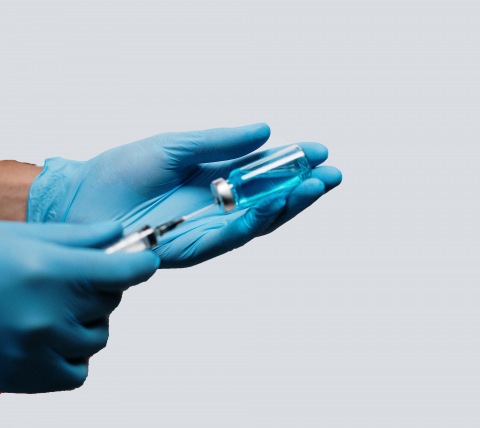
In the wake of a pandemic, the one question that many people have is how to protect themselves from something they cannot physically see. The solution to it is simple to understand, yet complex in its creation—vaccines. Dr. Guido Ferrari, associate professor of surgery, Dr. David Montefiori, professor of surgery, and Dr. Georgia Tomaras, professor of surgery, are currently researching the SARS-CoV-2 virus with the goal of creating an effective COVID-19 vaccine for the public.
“There are some challenges with this virus, but we’re working through it collaboratively,” says Dr. Montefiori. “Our goal is to be able to assess the protective antibody responses in the COVID-19 vaccine trials that are currently in progress.”
Prior to researching a vaccine for SARS-CoV-2, these three were part of the central laboratory for developing the HIV vaccine. Their work specialized in monitoring the antibody responses to vaccines, both at the preclinical level and in clinical trials. Over the years, they have explored different technologies for antibody assays for HIV and the variability of the virus that understands how to incorporate that diversity into their assessments of vaccine-elicited antibody responses. Essentially, vaccines must take into account different strains of the virus in order to prove its effectiveness. Dr. Montefiori and his team have utilized their methods from their HIV assays into researching a vaccine for SARS-CoV-2.
“We began to adapt our assay technologies to be able to assess neutralizing antibodies to SARS-CoV-2,” says Dr. Montefiori. “The technologies that we use for HIV are rather directly applicable to doing similar types of assessments of neutralizing antibodies to SARS-CoV-2.”
According to Dr. Montefiori, antibodies are thought to be a very important immune response for a vaccine to elicit in order to protect against the coronavirus. Neutralizing antibodies are a very high priority and scientifically the types of measurements that this team make are considered critical for the coronavirus vaccine.
“A key part of the virus called the spike protein on the surface of the SARS-CoV-2 virus allows the virus to attach to a cell and enter it during the infection process,” says Dr. Montefiori. “This spike protein, a very important part of the virus, is the target for neutralizing antibodies.”
As antibodies are made to bind the right portion of the spike protein, they can block the virus from finding and entering a cell, thereby preventing infection. This is the portion of the virus that all the vaccines are based on with the goal of inducing a protective neutralizing antibody response.
One method of understanding the SARS-CoV-2 virus was analyzing its genetic sequences to determine if the virus would mutate. Viruses mutate all the time and for many of them those mutations have no consequences, meaning they provide no advantage to the virus. Occasionally, a mutation will occur that will provide an advantage to the virus causing it to spread within the population.
Dr. Bette Korber, from the Los Alamos National Laboratory in New Mexico and research collaborator to Dr. Montefiori, noticed a mutation in the spike protein, D614G, that in March and April had quickly spread across the globe and is now the dominant form of the virus in the United States and many other parts of the world.
“As more and more genetic sequences were deposited into the database from all over the world, we started tracking this mutation and noticed that the D614G gene was becoming more and more prevalent in the pandemic,” explains Dr. Montefiori.
“In fact, what the sequence data show is that this particular mutant form of the virus started spreading rapidly at Europe in March and then continued to spread to other parts of the world becoming the dominant mutant form of the virus.”
While the D614G started in Europe, the one that started the outbreak in China was the D614D form. What Dr. Montefiori and his team found was that the G form was more transmissible and is the predominant form of the virus now.
With the discovery of the G form of the virus, the next step is knowing how this might affect the current vaccines being tested because all of them are based on the original D form strain. Currently, the team is conducting research to determine whether or not the G form might be less susceptible to the vaccines.
“We’re hoping that it will be just as susceptible to the vaccines as the D form and there’s a good possibility that that will be the case where the current vaccines will be equally effective against both forms,” says Dr. Montefiori. “But if we find that the G form is different enough, then that would be an indication that the vaccines need to be quickly re-engineered to effect both forms of the virus.”
Currently, the literature addressing the D614G mutant form of the SARS-CoV-2 virus has been submitted for publication.